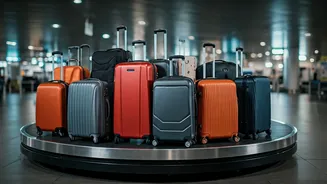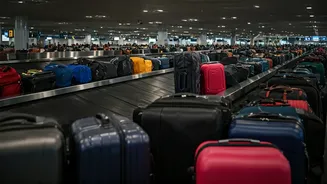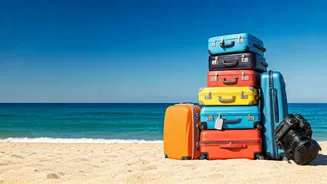What Is a Travelator?
A travelator, also known as a moving walkway or moving pavement, is a conveyor mechanism designed for transporting people across a horizontal or inclined
plane. These are commonly found in busy public spaces such as airports, railway stations, and shopping malls. Their primary function is to aid pedestrian movement, allowing people to cover long distances with less effort, particularly those with luggage or mobility issues. The travelator's design typically involves a continuous belt or a series of interconnected plates that move at a consistent speed. This allows passengers to either stand and be carried or walk alongside to increase their pace. Travelators significantly improve traffic flow and ease congestion in high-volume areas. The moving walkways also play a significant role in reducing walking distances for travelers, thus enhancing overall accessibility and convenience within expansive infrastructural setups.
How Travelators Function
The operating mechanism of a travelator is generally straightforward but efficient. The central component is a continuously moving belt or a series of linked platforms. This belt or platform arrangement is driven by a powerful motor, which ensures smooth and consistent movement. The speed of the travelator is typically set at a moderate pace to accommodate both standing passengers and walkers. The design incorporates safety features such as handrails, which provide support for travelers. These are especially beneficial for older adults, children, and people with disabilities. Many travelators have sensors to detect any objects or obstructions, automatically stopping or slowing the walkway to prevent accidents. Regular maintenance is essential to maintain the functionality and safety of these systems, involving inspections and cleaning to prevent mechanical failures and ensure a safe experience for all users.
Travelator Etiquette Tips
Proper travelator etiquette enhances both safety and efficiency, reducing potential congestion and hazards. The most crucial rule is to stand on the right and walk on the left, which facilitates a smooth flow of passengers. This allows those in a hurry to pass those who prefer to stand without any obstructions. It is crucial to maintain a safe distance from the edges of the travelator to prevent tripping or losing balance, and keep a firm grip on the handrails for additional support. Parents should always hold the hands of their children. Avoid carrying large items or luggage that might block the path or cause others to stumble. Refrain from stopping abruptly or congregating on the moving walkway, particularly if you are with a group, and make way for others. Being mindful of these practices ensures a safer and more convenient experience for everyone.
Why Not Standing Still?
Standing still on a travelator is generally considered a faux pas because it disrupts the flow of pedestrian traffic. The primary goal of a travelator is to expedite movement, and when individuals stand still, they occupy space that could be used by those walking at their own pace or who are trying to get to their destinations faster. This behavior contributes to congestion, especially during peak travel times, which can lead to delays and frustration for other passengers. Moreover, standing still might cause safety risks, such as tripping hazards, for those walking behind. Following the 'stand right, walk left' rule maximizes the walkway's efficiency, promoting faster travel and reducing congestion. Travelers should try to be considerate of others. Using the travelator effectively enhances the overall travel experience, ensuring that everyone can reach their destinations in a timely and safe manner.
Airport Travel Safety
Safety on airport travelators goes beyond simply standing on the right side. It includes several additional considerations. Always keep a close eye on children to ensure they do not run or play on the walkway. Be mindful of your belongings; keep luggage and personal items secure to prevent them from becoming an obstruction. Avoid leaning too far over the handrails or the edge of the travelator, as this can lead to accidental falls. Ensure that you are wearing appropriate footwear. Heels and loose footwear can be particularly dangerous on moving walkways. Be aware of your surroundings, and pay attention to where you are stepping to prevent tripping. If you encounter any problems or witness an incident, notify airport staff immediately. Practicing these safety precautions will not only protect your wellbeing but also contribute to a safer environment for fellow travelers.














